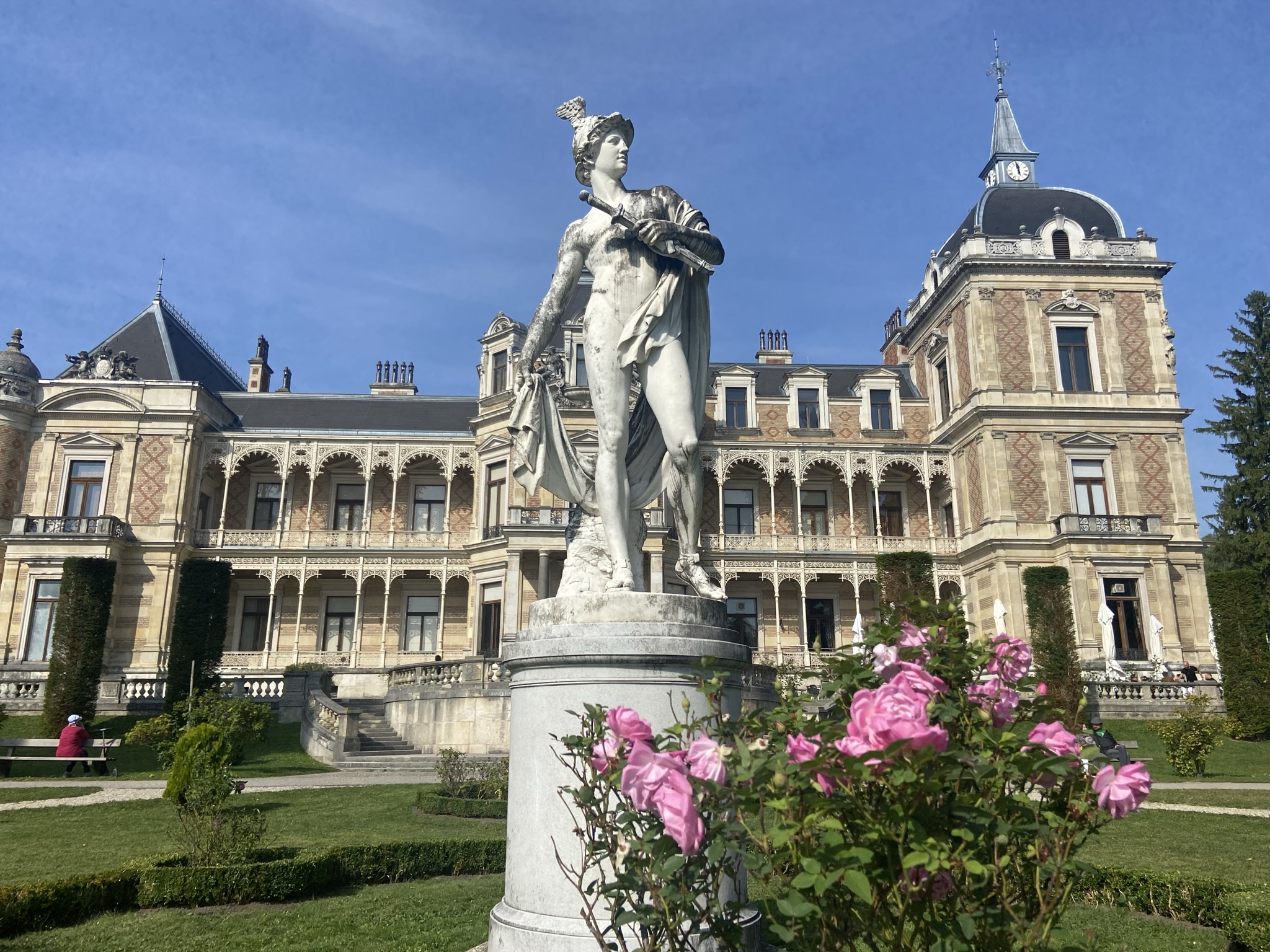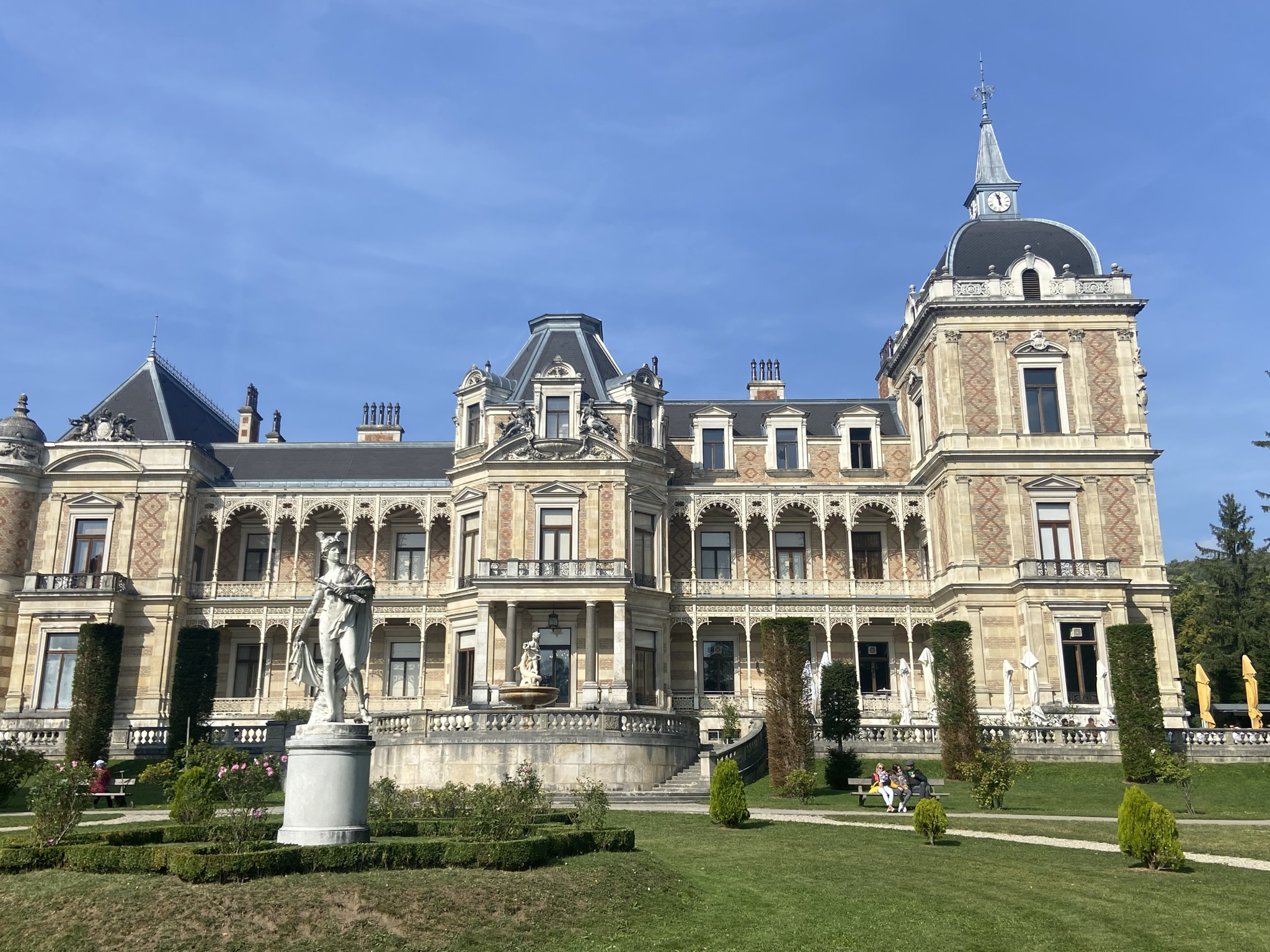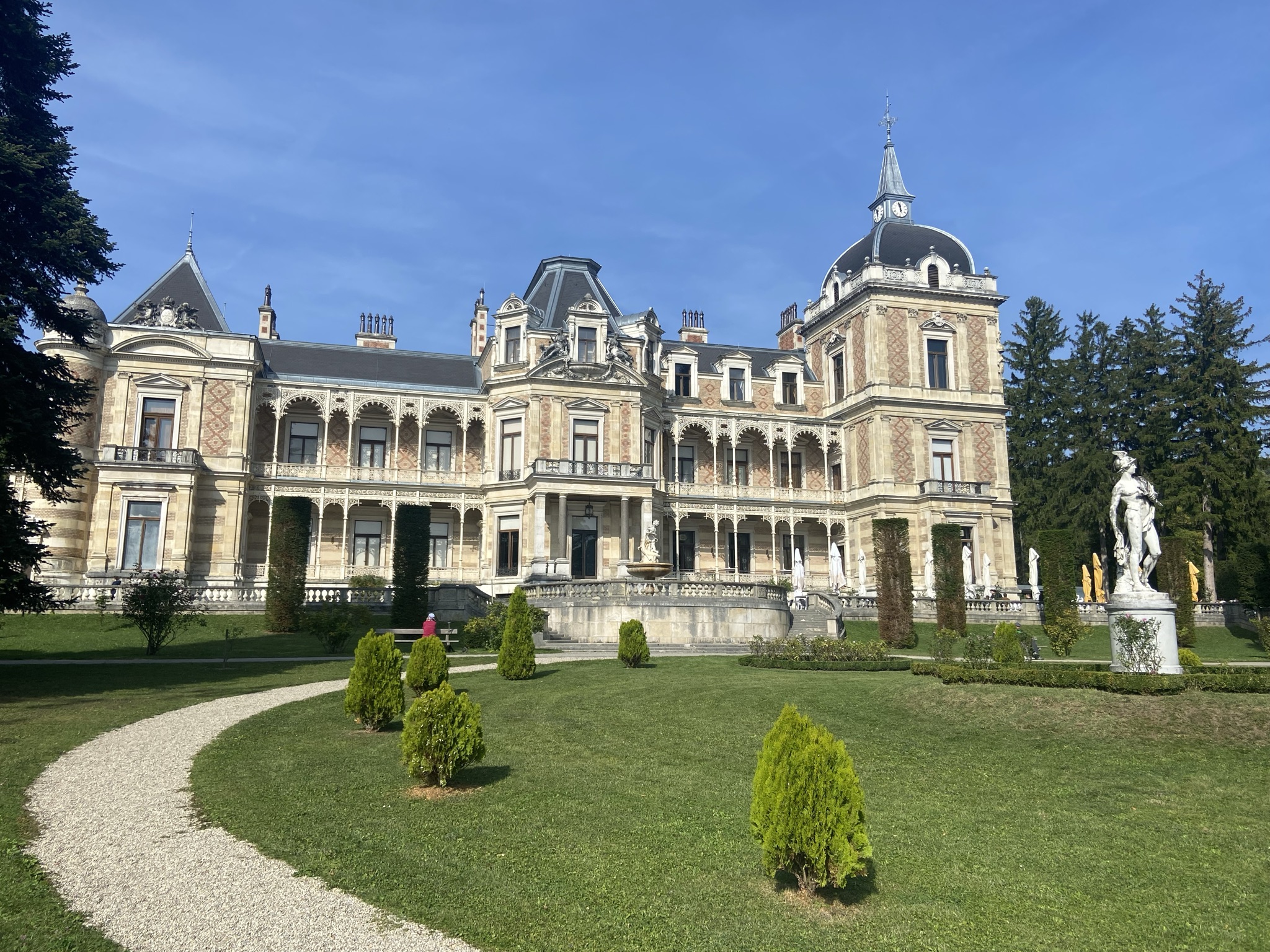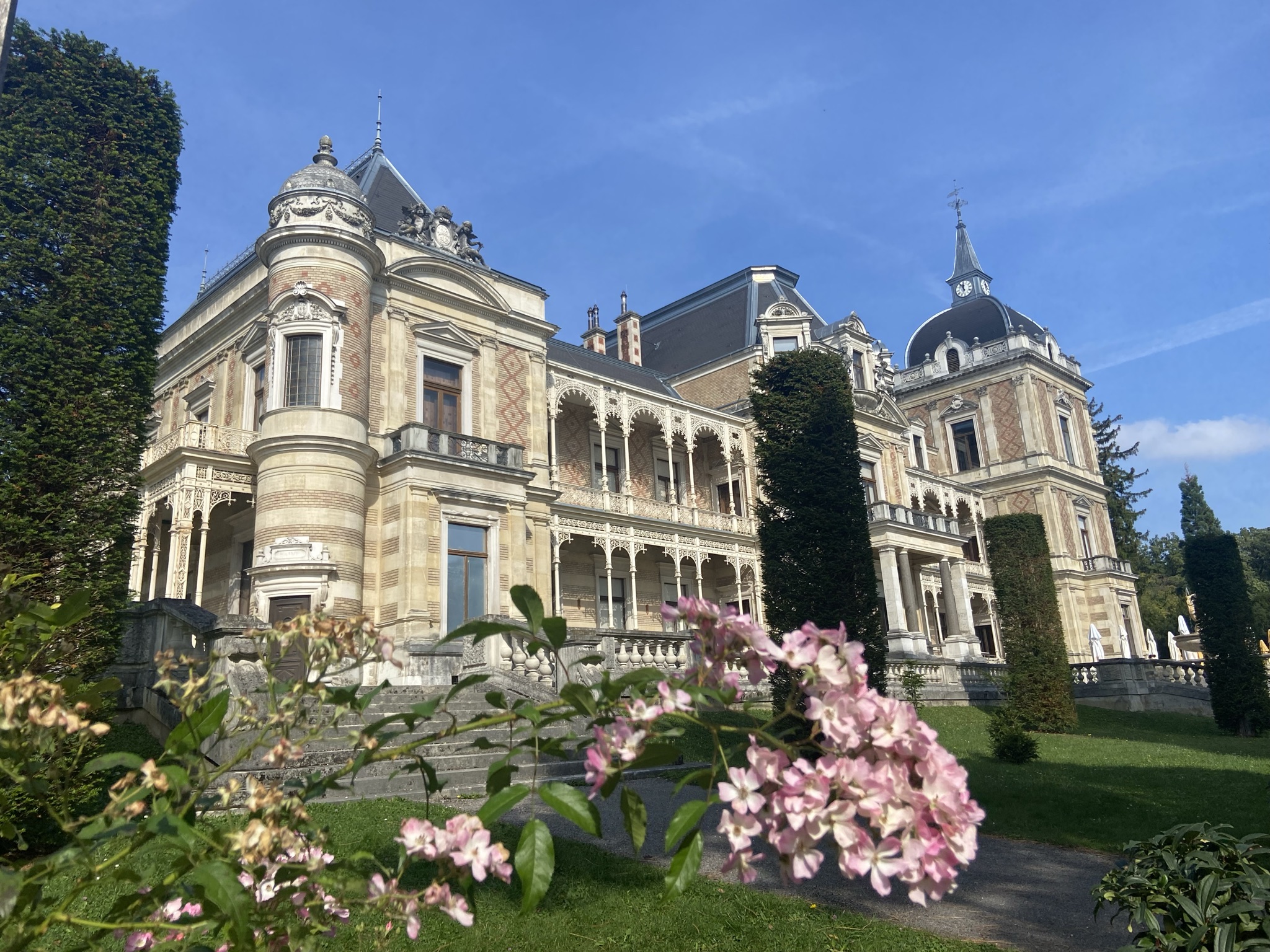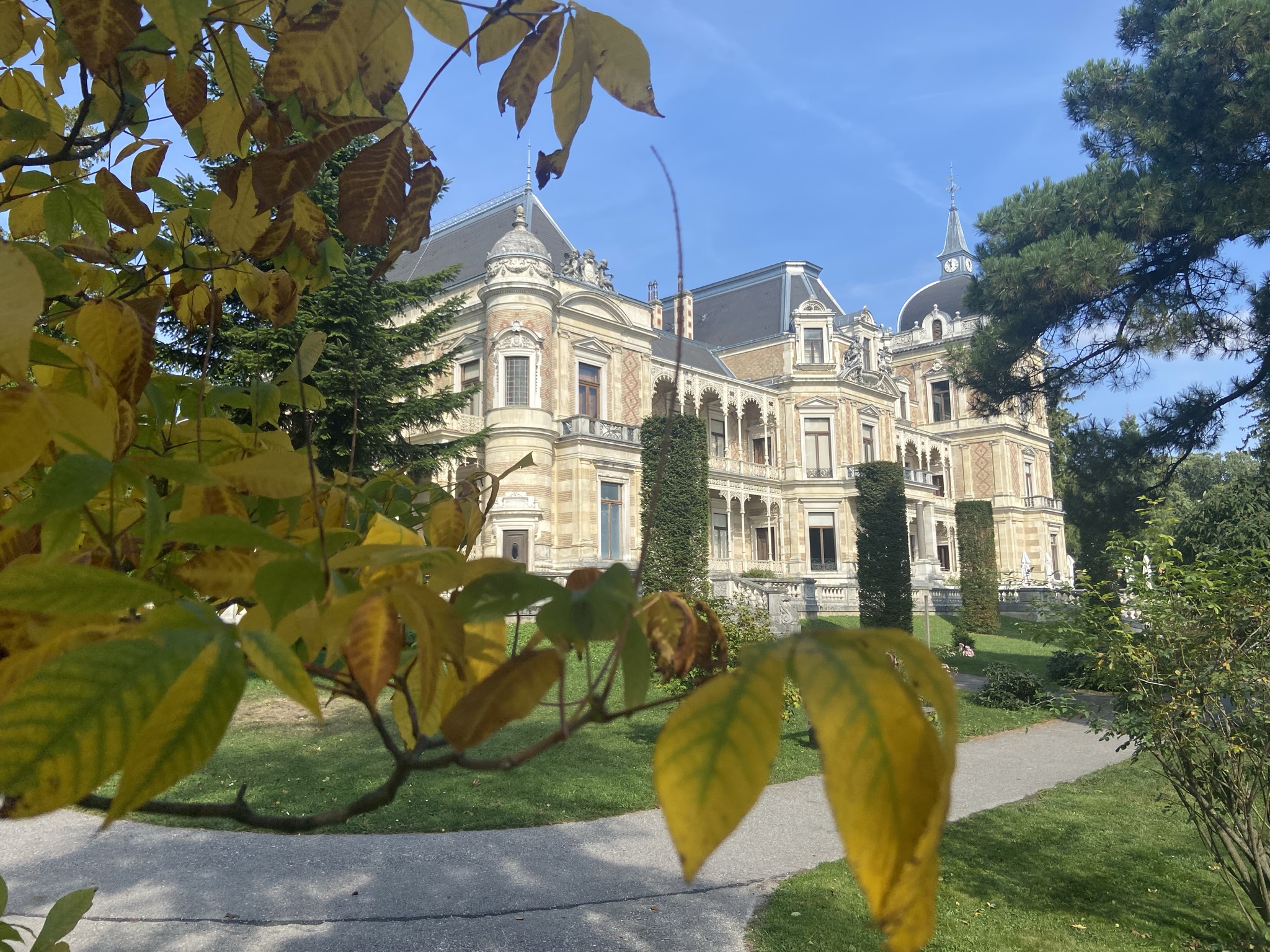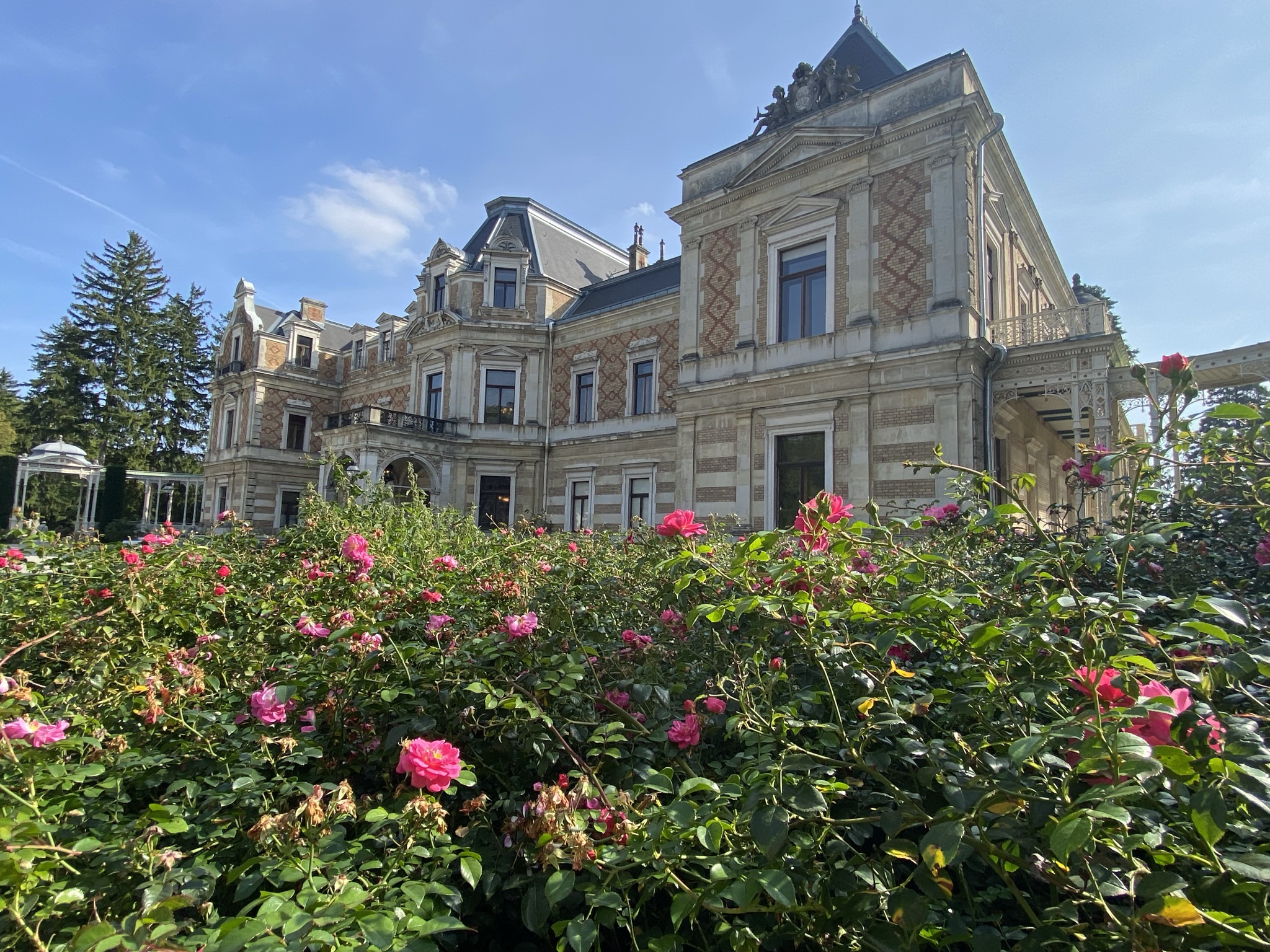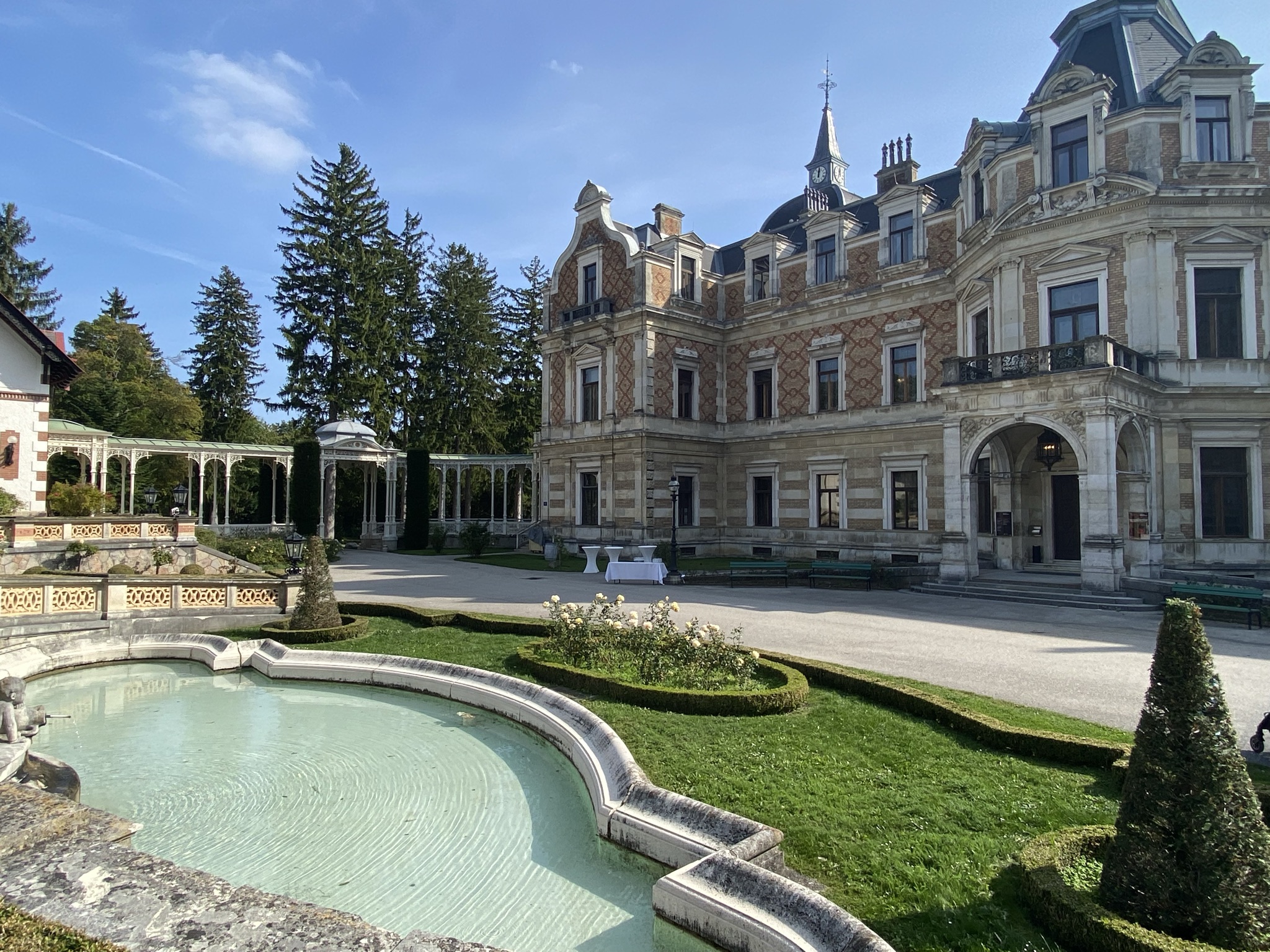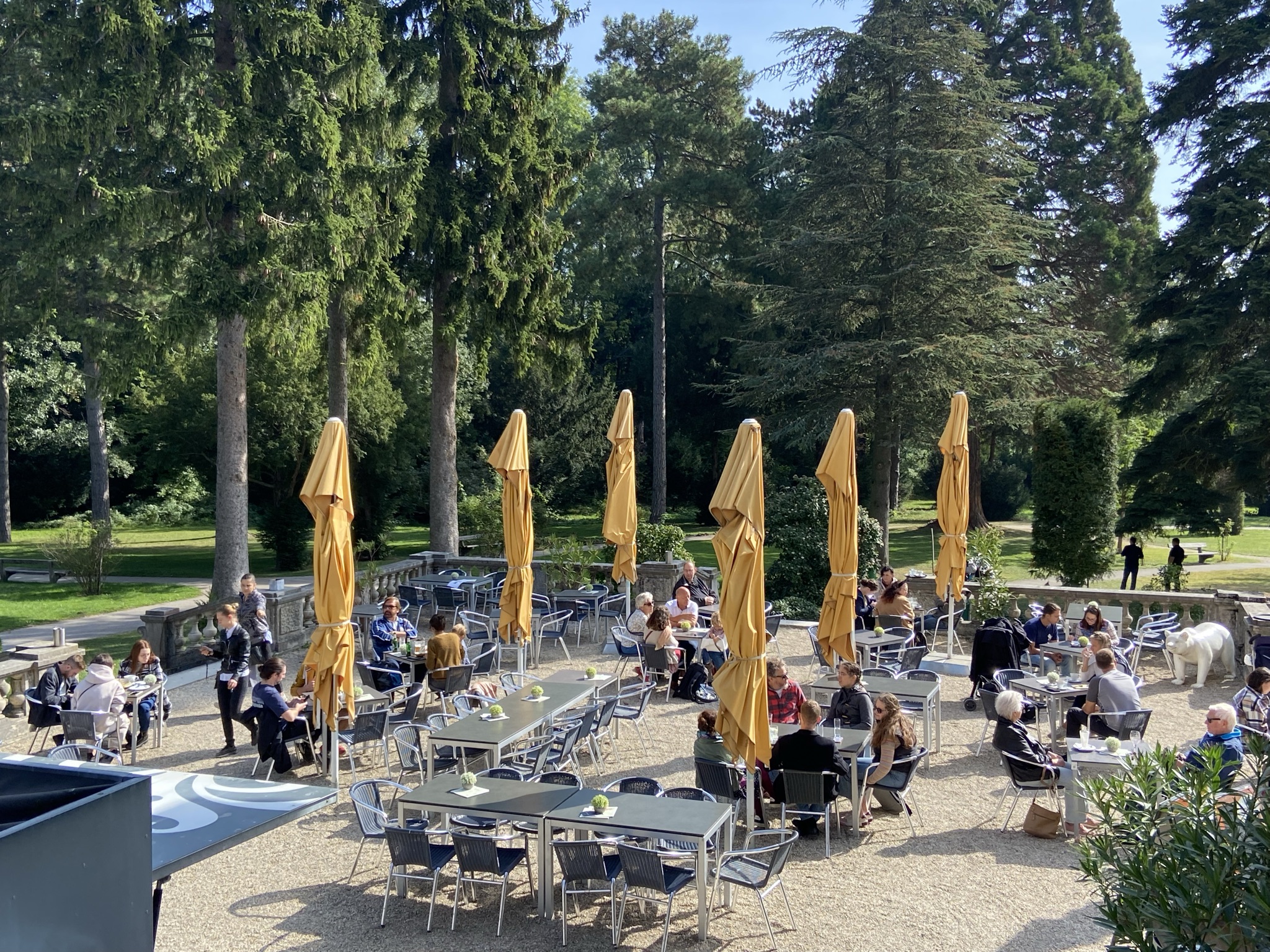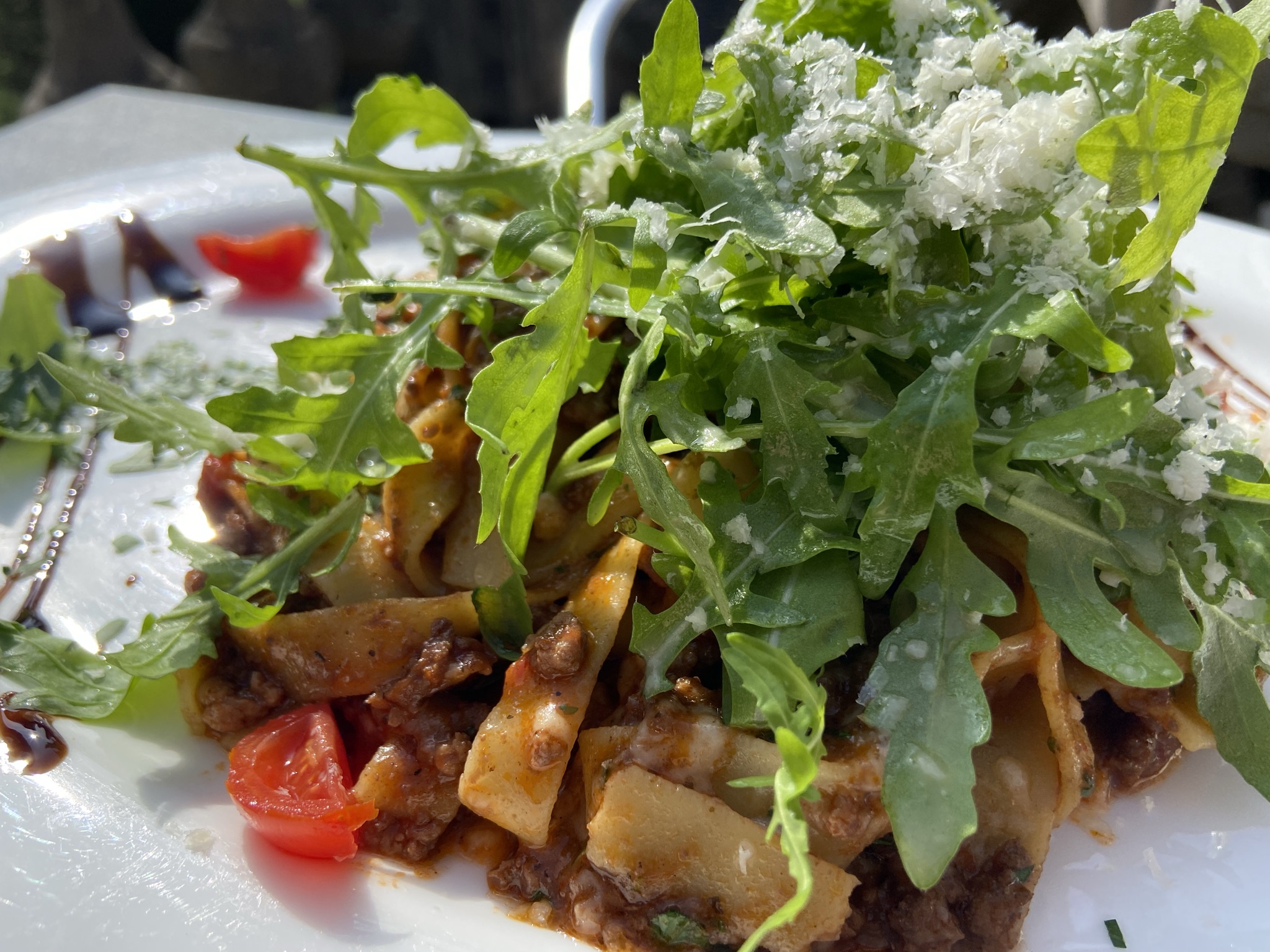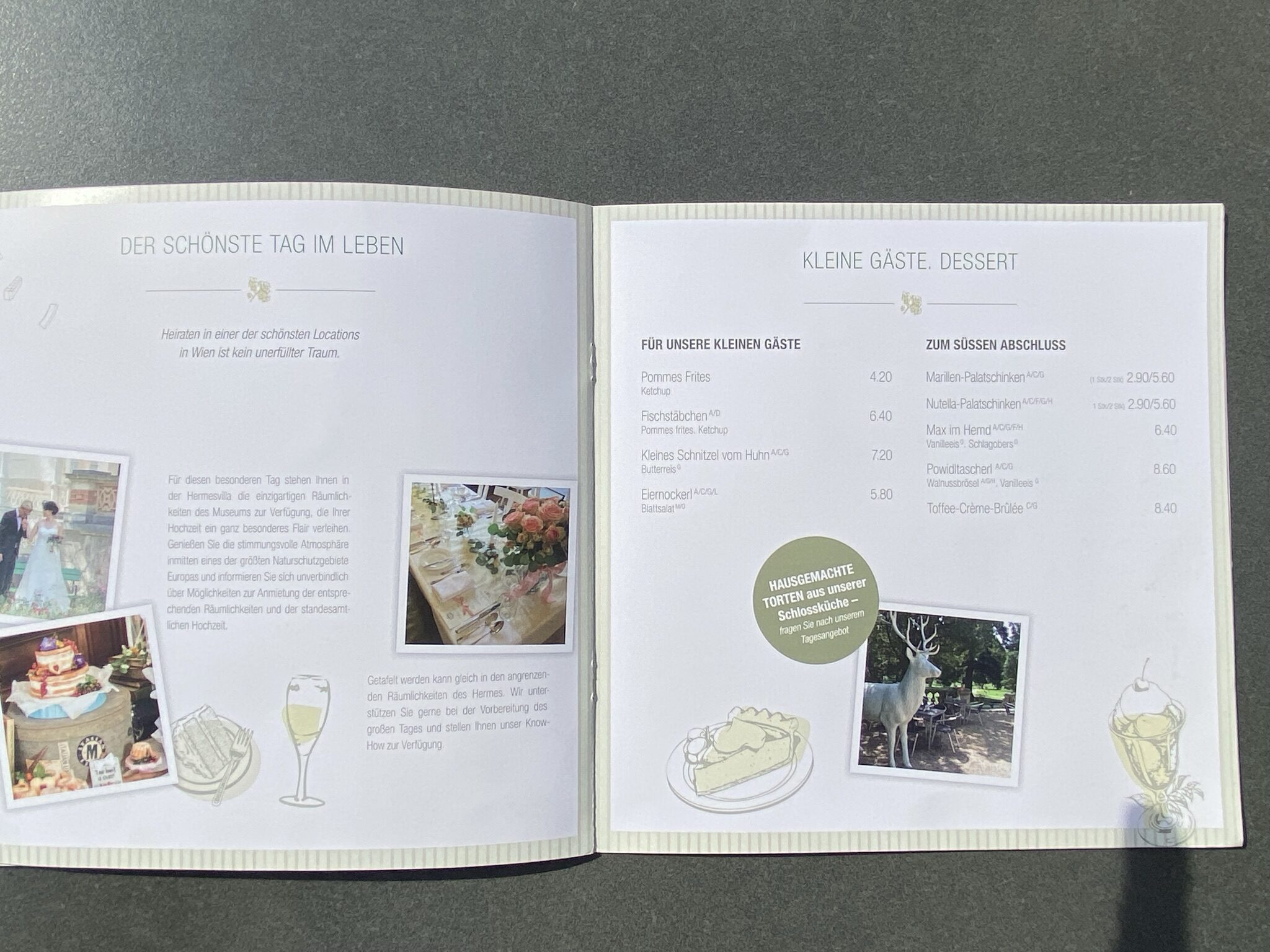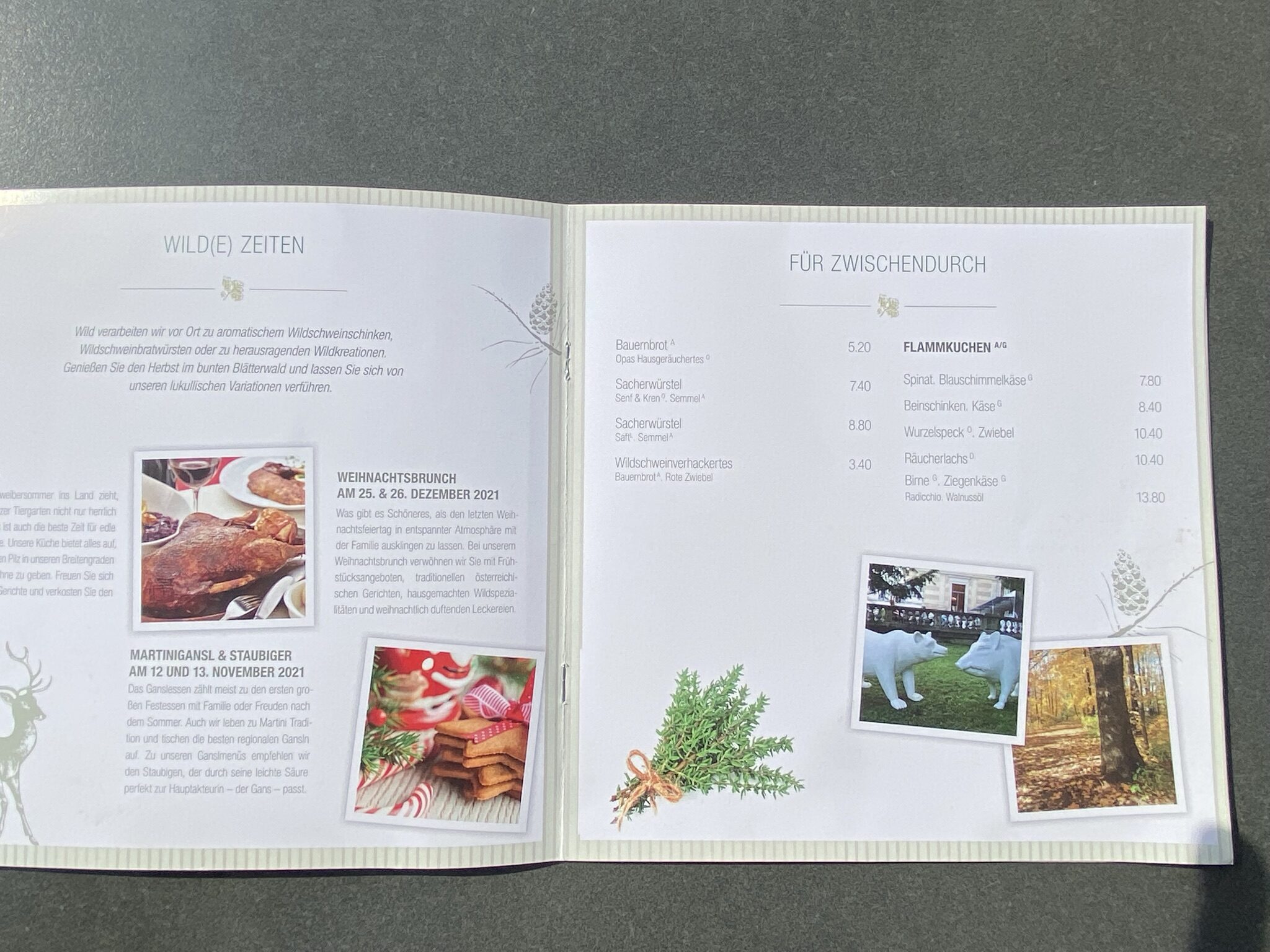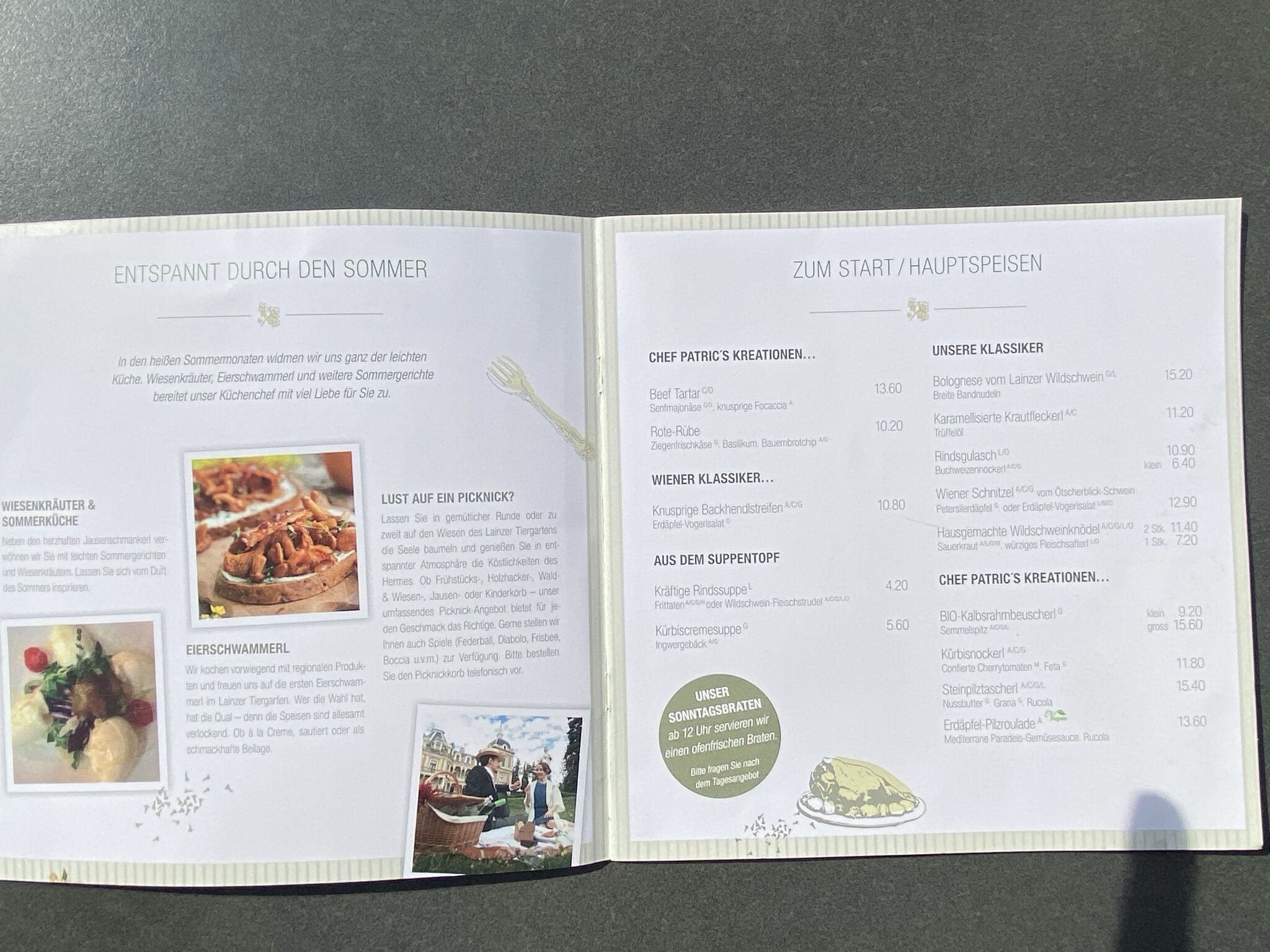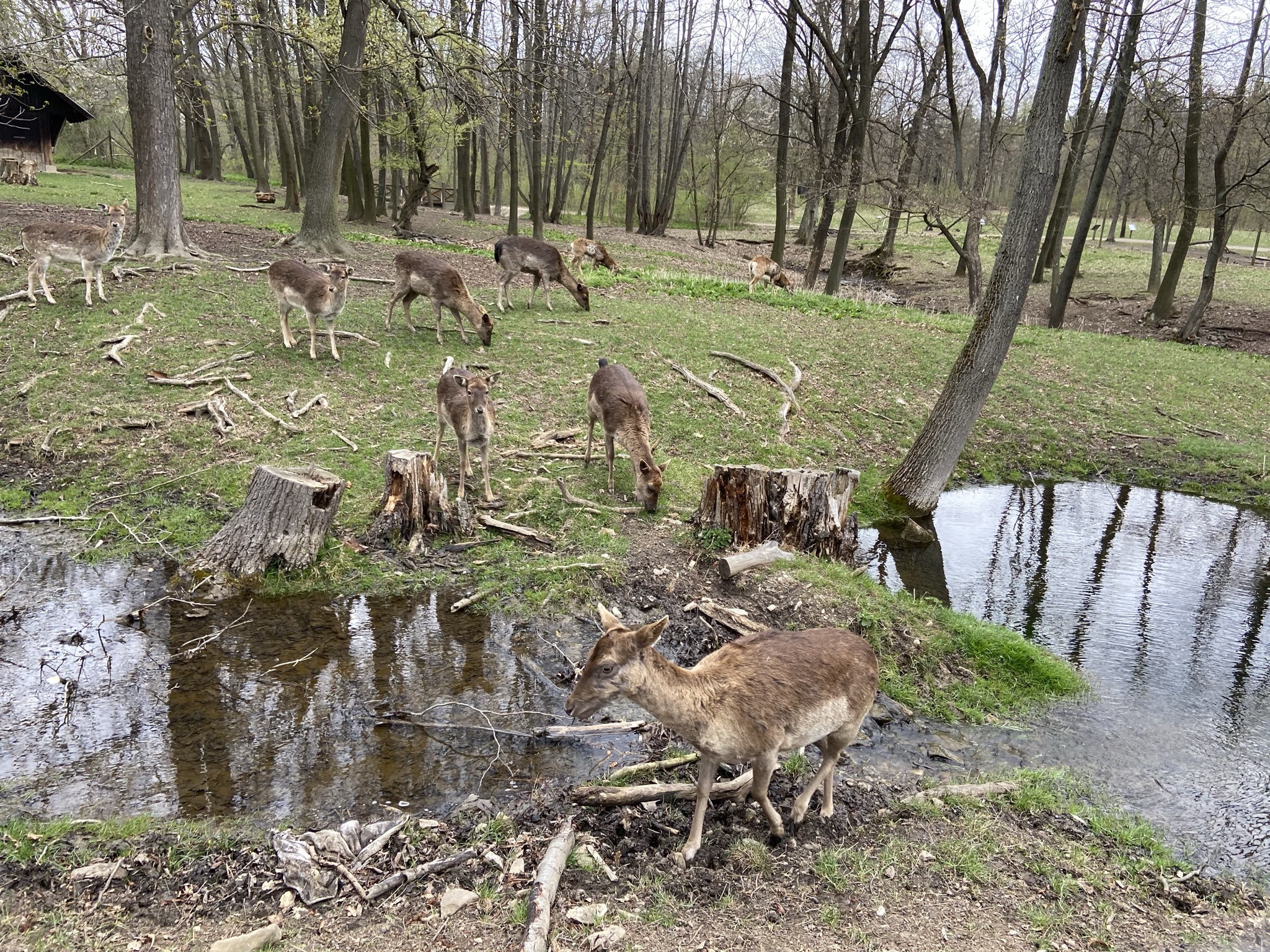Brief information:
- Where is the Lainzer Tiergarten located? In the west of Vienna, parts also belong to Lower Austria
- What animals can you see there? There are 800 to 1000 wild boar, 80 to 100 red deer, 200 to 250 fallow deer, countless roe deer and around 700 mouflons.
- Where is the entrance? There are 6 goals: Lainzer TorSt. Veiter Tor, Gütenbach GatePulverstampftor, Laaber Tor and Nikolai Gate
- Does it cost admission? The Lainzer Tiergarten does not. Here the Entrance fees to the Hermesvilla.
- When is it open? All year round, you can find the exact times HERE.
The Hermesvilla
The "palace of dreams", as Empress Elisabeth once called her villa, was given to her as a gift by her husband Emperor Franz Joseph. He hoped to use this "gift" to keep his wife, who loved travelling, in Vienna more often. It took the famous Ringstrasse architect Carl von Hasenauer five years to build this building, which set an example for many romantic country houses of the upper middle classes.
Today, various exhibitions are held in the Hermesvilla. On the first floor, you can see how the imperial couple once lived in private. The oversized sumptuous bed is from the time of Maria Theresa. The walls are adorned with impressive murals. Sissi's personal gymnasium can also still be visited. Special exhibitions are also organised in the Hermesvilla from time to time. The Hermesvilla café-restaurant is a wonderful place to eat. On sunny days, we recommend making a reservation for one of the tables outside! +43 676 3926140
The Hermesvilla can be reached via the Lainzer Tor.
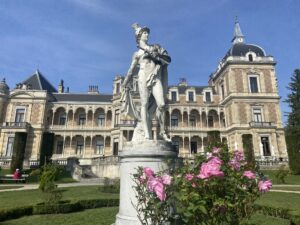
The Lainzer Tor
This is the most important access point to the Lainzer Tiergarten, the Main gate. Directly at the entrance is the Visitor centrewhere you can obtain the most important information about the nature reserve. Hiking maps are also available here. In the visitor centre, you can find your way around with the help of an interactive terrain model or book a guided tour. The following options are available: Wild herb walk, bat walk, bird song walk, Johannser Kogel. Guided tours of the Lainzer Tiergarten are also available for school classes.
Just a few metres after the entrance to the Lainzer Tor you will find a huge playground with swings, slides, covered sandpit and much more. A real paradise for children!
Behind it is the beautiful Hohenau pond, where you can observe some rare ducks. If you look closely, you can also spot huge carp in the water.
You will find the Hermesvilla about 20 minutes' walk from the entrance. If you like, you can visit the Forest nature trail walk. It first goes past the fallow deer and mouflon enclosure (opposite the playground). The path is lined with various information boards and the typical tree species of the Vienna Woods are explained using the corresponding trees. The trees themselves "report" on their age, their occurrence and their characteristics: Leaves, seedlings and fruits of the tree species are presented with the help of detailed drawings.
Here you can find information about the Nikolai Gate and Gütenbach Gate
The Lainzer Tiergarten in general
The Lainzer Tiergarten is not an animal park or zoo like Schönbrunn or the Herberstein Animal World imagine. There are no exotic animals here. Instead, wild boar, red deer, fallow deer, roe deer and mouflon live in the wild. Only if you are lucky will you see a wild boar - on other days you might only see ducks.
Nevertheless, the Lainzer Tiergarten is a very popular destination for the Viennese and Lower Austrians, as it is a very relaxing place to walk and hike in this unspoilt part of the Vienna Woods. Over 500,000 visitors come here every year. The area covers a total area of 2,450 hectares - 1,945 hectares of which is forest. The entire area is surrounded by a 22 kilometre long wall. This wall still has a funny history today:
From 1782 to 1787, Emperor Joseph II commissioned the master bricklayer Philipp Schlucker to build the wall. The price offered by Mr Schlucker was so low at the time that the Viennese people feared that the master bricklayer would become impoverished; although this fear did not materialise, the expression "poor bastard" is still a familiar term today.
You can only enter through 6 gates. Cycling is prohibited in the nature reserve (except for children under the age of 6). Dogs are also not allowed in the Lainzer Tiergarten.
Plants and animals
Since 2008, the Lainzer Tiergarten also a European nature reserve. The zoo has a high level of biodiversity and is home to numerous endangered plant and animal species. A special feature of the zoo is its impressive beech and oak forests. Some of these have been preserved for over 400 years.
The Lainzer Tiergarten is home to around 800 to 1000 wild boar, 80 to 100 red deer, 200 to 250 fallow deer, countless roe deer and around 700 mouflons.
The birdlife at Lainzer Tiergarten is particularly diverse, with over 94 different species to be found here. Numerous species of birds of prey live in the zoo, as well as rare birds such as the white-backed woodpecker, the lesser spotted and collared flycatcher, the stock dove, the tawny owl and the black woodpecker.
15 species of reptiles and amphibians live here, such as the yellow-bellied toad, fire salamander, alpine newt, alpine crested newt and European tree frog. There are also 39 different species of grasshopper and countless butterflies in the Lainzer Tiergarten. If you're lucky, you might spot one of the 13 bat species.
Leisure activities
As already mentioned, the zoo is particularly popular with hikers, runners, walkers and strollers. There are 6 children's playgrounds for families, most of which are located near the gates. Visitors will find various viewpoints, meadows for picnics, running routes, a lookout point, the Nikolai Chapel and places to stop for refreshments such as the Rohrhaus (+431 8041323), Hirschgstemm (+43 664 1572585) or the Hermesvilla café-restaurant (+43 676 3926140).
For visitors, there is the forest nature trail at the Lainzer Tor and the nature trail at the Nikolaitor.
Forest playgrounds
- Lainzer TorThis playground is 200 metres from the Lainzer Tor, on the left-hand side of Kastanienallee, which leads to the Hermesvilla.
- Hermesvilla: This is a small playground located in the Tiergarten on the path leading from Lainzer Tor towards Hermesvilla, just before the villa on the left.
- Gütenbachtal: About 100 metres from the Gütenbach Gate in the zoo, this forest playground can be found on the left-hand side.
- Hirschgstemm: This playground is located next to the corresponding inn in the Lainzer Tiergarten.
- Rohrhaus: This playground is located at the Rohrhaus inn.
- Nikolaiwiese: About 100 metres from the Nikolai Gate removed from the Lainzer Tiergarten
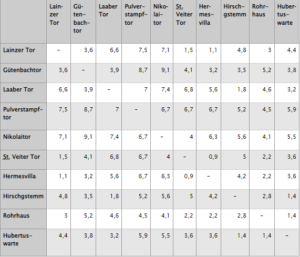
Contact
Short info:
- Where is the Lainzer Tiergarten? To the west of Vienna, parts also belong to Lower Austria
- What animals can you see there? There are 800 to 1000 wild boars, 80 to 100 red deer, 200 to 250 fallow deer, countless roe deer and around 700 mouflon.
- Where is the entrance? There are 6 gates: Lainzer TorSt. Veiter Tor, Gütenbach Gate, Pulverstampftor, Laaber Tor and Nikolai Gate
- Does it cost entry? Not the Lainzer Tiergarten. Here are the admission prices for the Hermesvilla.
- When is it open? All year round, you can find the exact times HERE.
The Hermes Villa
The "Castle of Dreams", as Empress Elisabeth once called her villa, was a present from her husband, Emperor Franz Joseph. He hoped that with this "gift" he would be able to keep his wife, who loved to travel, in Vienna more often. In a five-year construction period, the well-known Ringstrasse architect Carl von Hasenauer created this building, which is exemplary for many romantic country houses of the upper classes.
Various exhibitions are held in the Hermesvilla today. On the 1st floor you can see how the imperial couple once lived privately. The oversized state bed is from the time of Maria Theresa. The walls are embellished with impressive murals. Sissi's personal gym can also still be visited. Special exhibitions are also regularly held in the Hermesvilla. In the café-restaurant Hermesvilla you can dine wonderfully. On sunny days a reservation for one of the tables outside is recommended! +43 676 3926140
The Hermesvilla can be reached via the Lainzer Tor.

The Lainzer Tor
This is the most important entrance to the Lainzer Tiergarten, the main gate, so to speak. The visitor centre is right at the entrance, where you can get the most important information about the nature reserve. Hiking maps are also available here. In the visitor centre you can find your way around with the help of an interactive terrain model or book guided tours. The following options are available: wild herb hike, bat, foray into bird calls, Johannser Kogel. Guided tours through the Lainzer Tiergarten are also offered for school classes.
Just a few metres after the entrance to the Lainzer Tor you will find a huge playground with swings, slides, a covered sandpit and much more. A real paradise for children!
Incidentally, behind it is the very beautiful Hohenau pond, where you can watch some rare ducks. If you look closely, you can also discover huge carp in the water.
The Hermesvilla is about a 20-minute walk from the entrance of Lainzer gate. If you want, you can walk the forest trail along the way. It first goes past the enclosure for fallow deer and mouflon (opposite the playground). The path is lined with various display boards, and the typical tree species of the Vienna Woods are explained using the corresponding trees. The trees themselves "report" on their age, their occurrence and their characteristics: leaves, seedlings and fruits of the tree species are presented with the help of detailed drawings.
Here you can find information about the Nikolai Gate and the Gütenbach Gate
The Lainzer Tiergarten in general
When you think of the Lainzer Tiergarten, you shouldn't imagine a zoo like Schönbrunn or the Herberstein animal world. There are no exotic animals here. Instead, the wild boar, red deer, fallow deer, roe deer and mouflon live in the wild. Only if you're lucky, a wild boar will cross your path - on other days you might only see ducks.
Nevertheless, the Lainzer Tiergarten is a very popular destination for the Viennese and Lower Austria, as you can walk and hike very relaxed in this primeval part of the Vienna Woods. Over 500,000 visitors come here every year. The area covers the entire area of 2,450 hectares - 1,945 hectares of which are forest areas. The entire area is surrounded by a 22 km long wall. This wall has a funny story to this day:
From 1782 to 1787, Emperor Josef II commissioned master mason Philipp Schlucker to build the wall. The price offered by Herr Schlucker was so low at the time that the people of Vienna feared that the master mason would become poor; although this fear did not materialise, the expression "poor sod" is still a common term today.
You can only get in through 6 gates. By the way, cycling is forbidden in the nature reserve (except for children under 6 years of age). Dogs are also not allowed in the Lainzer Tiergarten.
Plants and animals
Since 2008, the Lainzer Tiergarten has also been a European protected area. The zoo has a high biodiversity and has numerous endangered plant and animal species. A special feature of the zoo are its impressive beech and oak forests. Some of these have therefore been preserved for over 400 years.
Around 800 to 1000 wild boars, 80 to 100 red deer, 200 to 250 fallow deer, countless deer and around 700 moufflons live in the Lainzer Tiergarten.
The bird world of the Lainzer Tiergarten is particularly diverse. Over 94 different species can be found here. Numerous species of birds of prey live in the Tiergarten, as well as rare birds such as the white-backed woodpecker, the little and collared flycatcher, as well as the stock dove, the tawny owl and the black woodpecker.
15 species of reptiles and amphibians live here, such as the yellow-bellied toad, fire salamander, alpine newt, Alpine crested newt and European tree frog. There are also 39 different types of grasshoppers and countless butterflies in the Lainzer Tiergarten. If you are lucky, you can see one of the 13 species of bats.
Leisure offers
As already mentioned, the Tiergarten is particularly popular with hikers, runners, walkers and walkers. There are 6 children's playgrounds for families, mostly located at the gates. Visitors will find various vantage points, camp meadows for picnics, jogging trails, a lookout point, the Nikolai chapel and places to stop for refreshments such as the Rohrhaus (+431 8041323), Hirschgstemm (+43 664 1572585) or the café-restaurant Hermesvilla (+43 676 3926140).
For visitors there is a forest trail at the Lainzer Tor and a nature trail at the Nikolaitor.
Forest playgrounds
- Lainzer Tor: This playground is 200 metres from the Lainzer Tor, on the left of the Kastanienallee, which leads to the Hermesvilla.
- Hermesvilla: This is a small playground, which is located in the Tiergarten on the path that leads from the Lainzer Tor in the direction of Hermesvilla, just before the villa on the left-hand side.
- Güterbachtal: This forest playground can be found about 100 metres from the Gütenbach Gate in the Tiergarten on the left-hand side.
- Hirschgstemm: This playground is located at the corresponding inn directly in the Lainzer Tiergarten.
- Rohrhaus: This playground is located at the Gasthaus Rohrhaus.
- Nikolaiwiese: About 100 metres from the Nikolai Gate in the Lainzer Tiergarten


